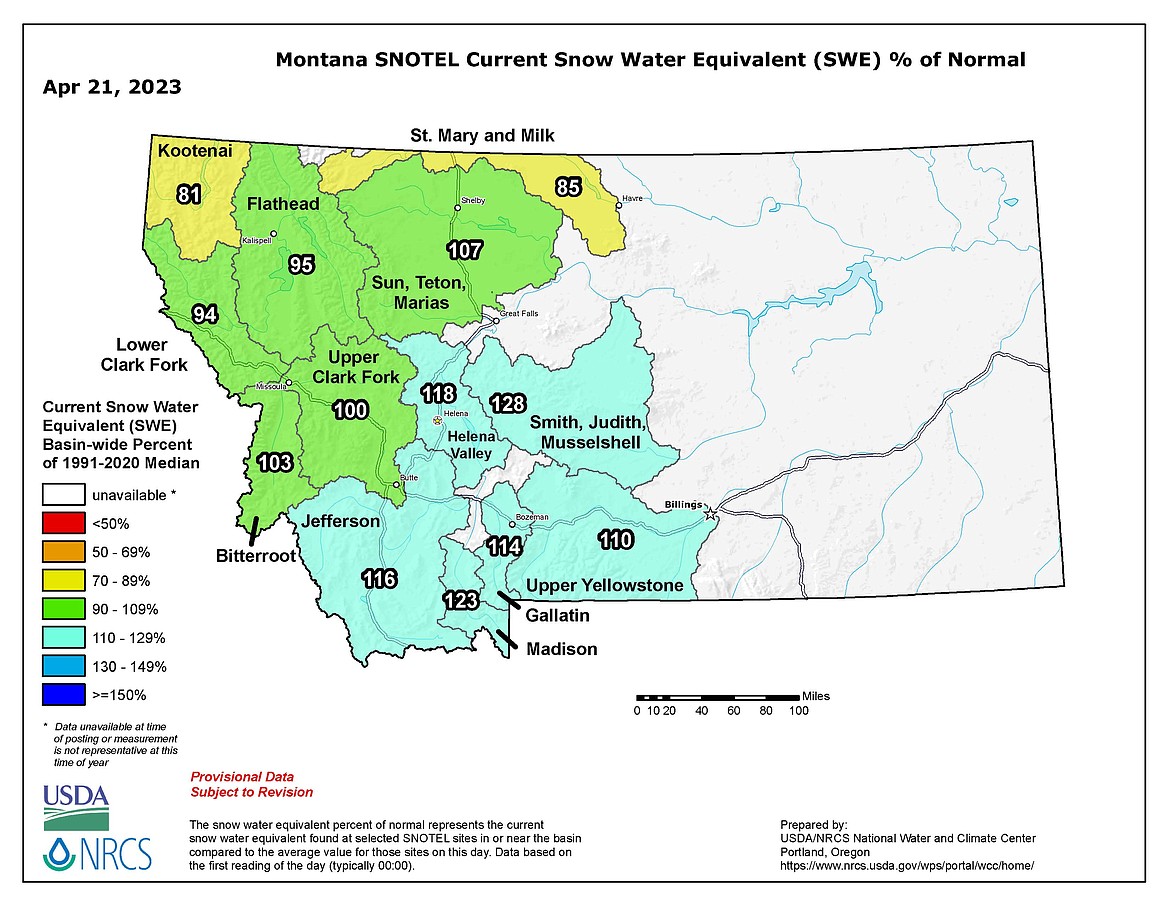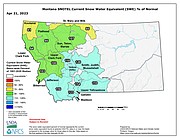Recent rains, snow help watershed
Recent spring rains and late snow have helped the area's watershed, Idaho Lakes Commission officials said recently.
"We need [the rain and snow] to keep the watershed full, the rivers flowing, the groundwater replenished, and so much more," Molly McCahon, Lakes Commission executive director, said in a recent update. "Every year the hydrology in the Pend Oreille Basin varies, but there are some general patterns and dates you can expect, just do not bet the farm on these."
Last year, McCahon said the region's snowpack stayed in the mountains until very late into the season due to the low temperatures the area saw until late June. That meant peak spring runoff and high water levels during the county's normal recreation season on both Priest Lake and Lake Pend Oreille.
Despite that, McCahon said Lake Pend Oreille stayed below its summer pool level, both because boat launches were too low for boaters to launch and because the high water flows made for dangerous conditions.
Meanwhile, on Priest Lake, the problem was more that of flooding during the recreation season.
"The moral of this story is that each year is different, each watershed is unique, and it's important to pay attention to water conditions," she said.
On April 1, on Lake Pend Oreille, Albeni Falls Dam operators closed the gates, allowing the lake to begin refilling for the normal summer pool level of 2062.5. McCahon said the lake gradually fills with spring runoff and typically reaches 2056 feet by May 1 — about the halfway mark from the winter pool level of 2051 and the summer pool level.
The Army Corps of Engineers, which operates the dam, monitors for flood risk during May in order to determine when to safely stabilize normal pool at 2062.5, McCahon said.
In a flood year, the lake can sometimes rise above summer pool, something that happened in 1974, 1997, 2022, and 2018. With Lake Pend Oreille receiving roughly 90% of its water from Montana, McCahon said a look at the state's snowpack can offer clues on the area's runoff and flood risk on the Clark Fork River and Lake Pend Oreille.
On April 21, Montana Snotel data show snowpacks in northwestern Montana ranging from 94% to 107% of normal. In the lower Clark Fork region, snowpack shows at 94% of normal while in the upper Clark Fork area, data shows snowpack at 100% of normal. And in the Flathead area, snowpack shows at 95% of normal.
Primary flood protection in the Pend Oreille Basin comes from Hungry Horse Dam, in the Flathead Basin, McCahon said. In a non-flood year, normal pool is typically stabilized by the Corps around June 15.
While Lake Pend Oreille and the Clark Fork receive most of their water from Montana, the Priest Lake watershed receives most of its runoff from Idaho and Washington, McCahon said.
With peak runoff typically seen in mid to late May, Priest Lake often rises well above the summer pool by late May to early June. The summer recreation level of Priest Lake is around 2,437.70 feet above sea level and is stabilized for the summer at 3 to 3.5 feet on the gauge, located just above Outlet Dam, McCahon said.
"The lake is typically stabilized — give or take a few inches for conditions — by the end of June," she said. "In a low water year, the dam gates will start closing, as needed, to capture runoff."
Since the 2015 drought, the Idaho Department of Water Resources has the operational flexibility to capture up to 6 additional inches above summer pool, in low water years. The practice is meant to alleviate stressors on the Priest River by slowly releasing stored water when inflows are low and temperatures are high, she added.



